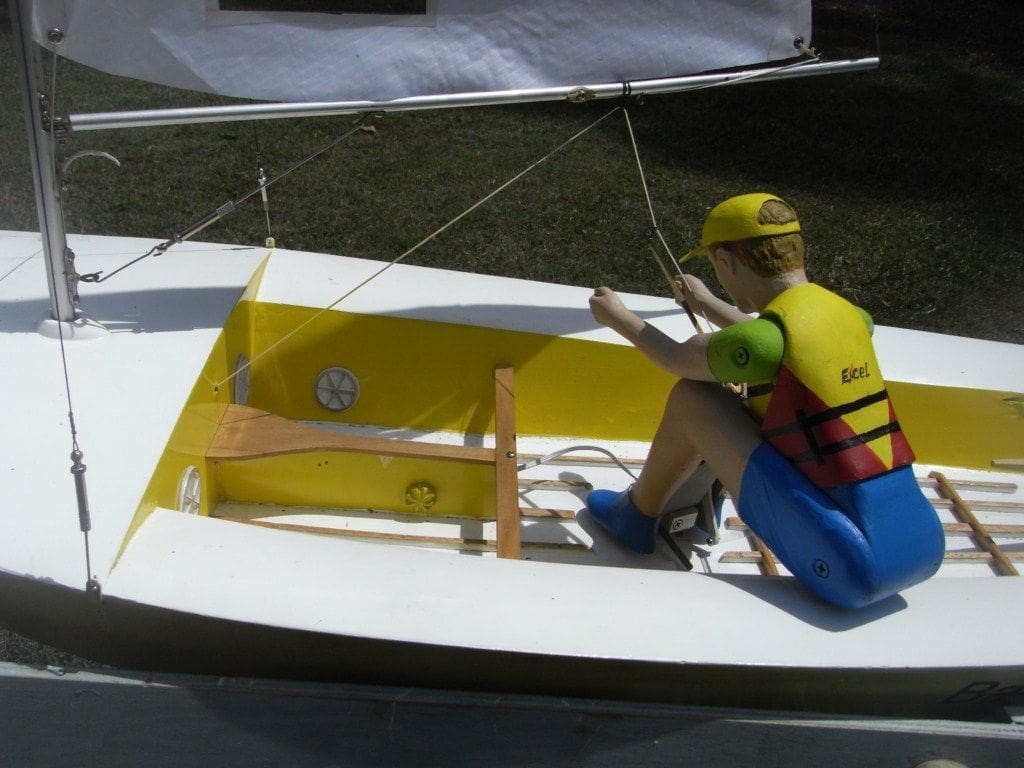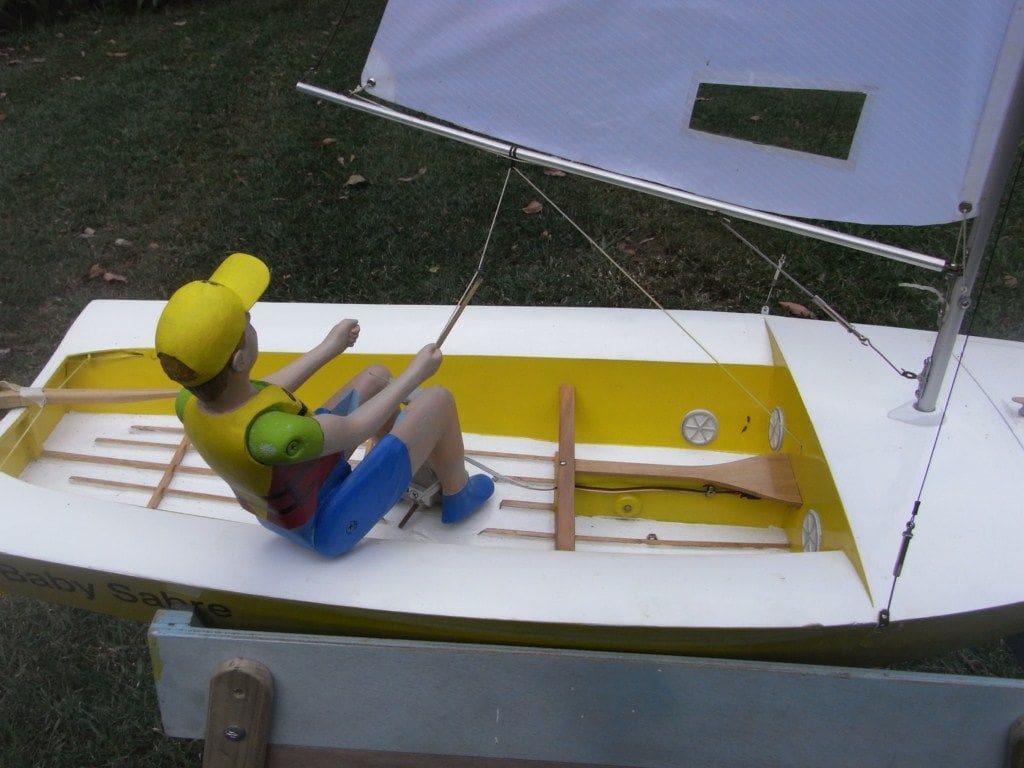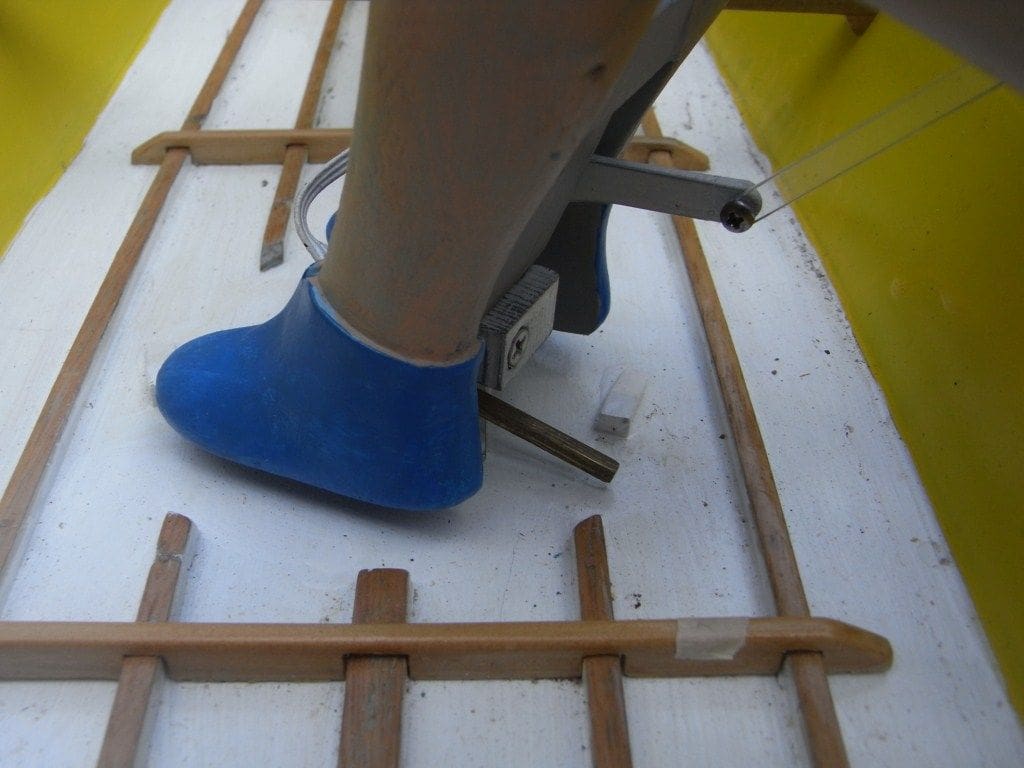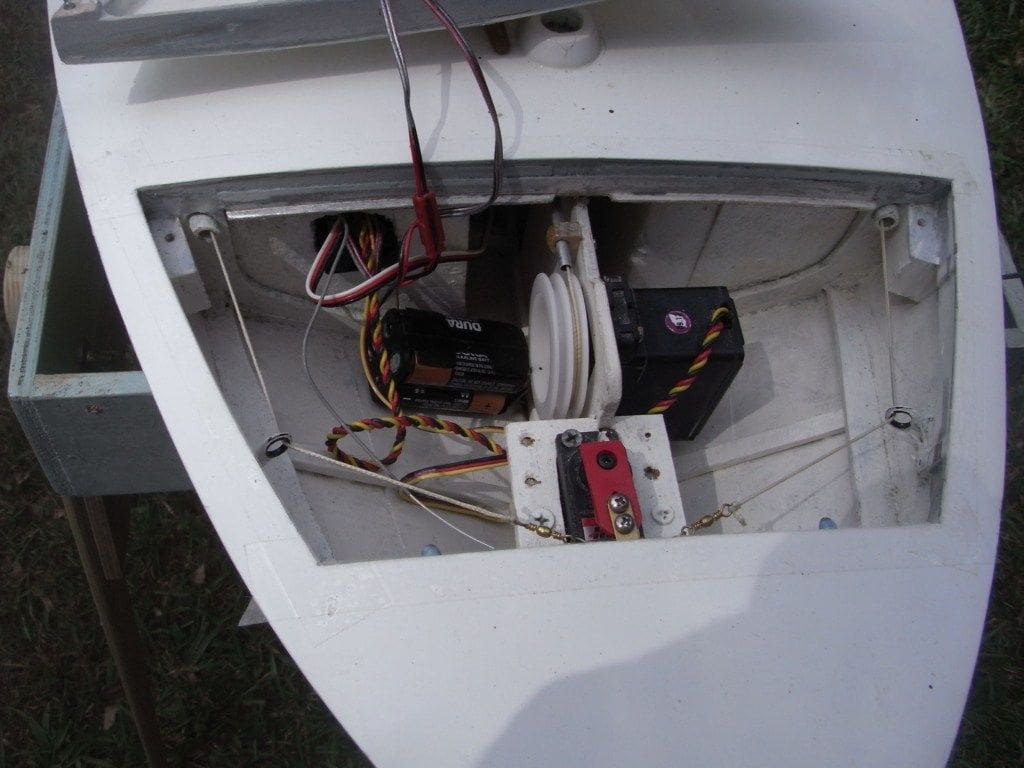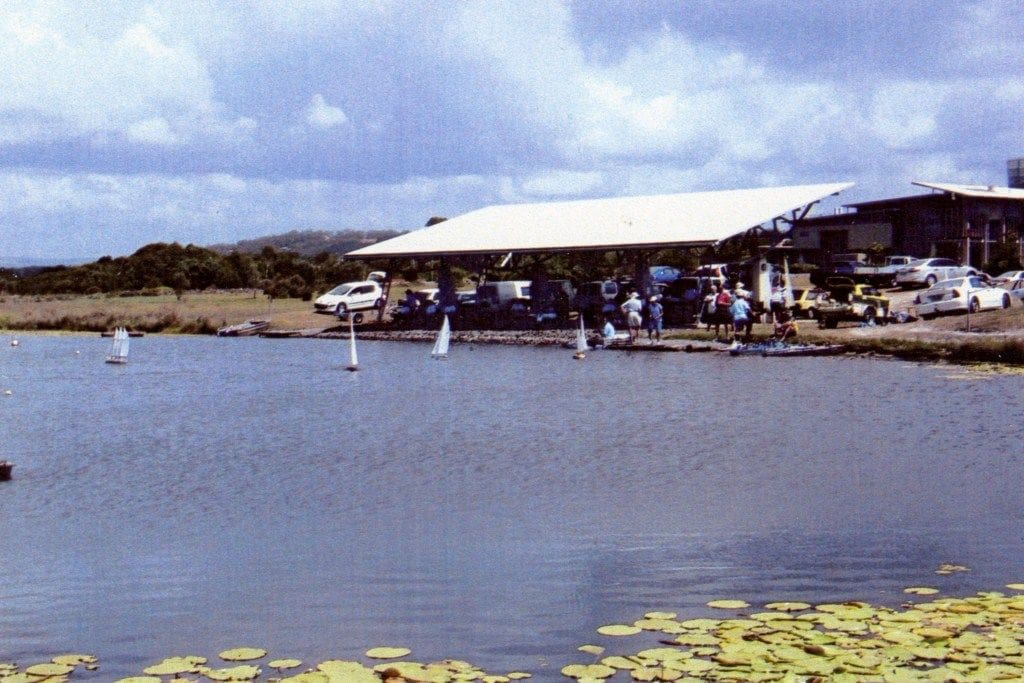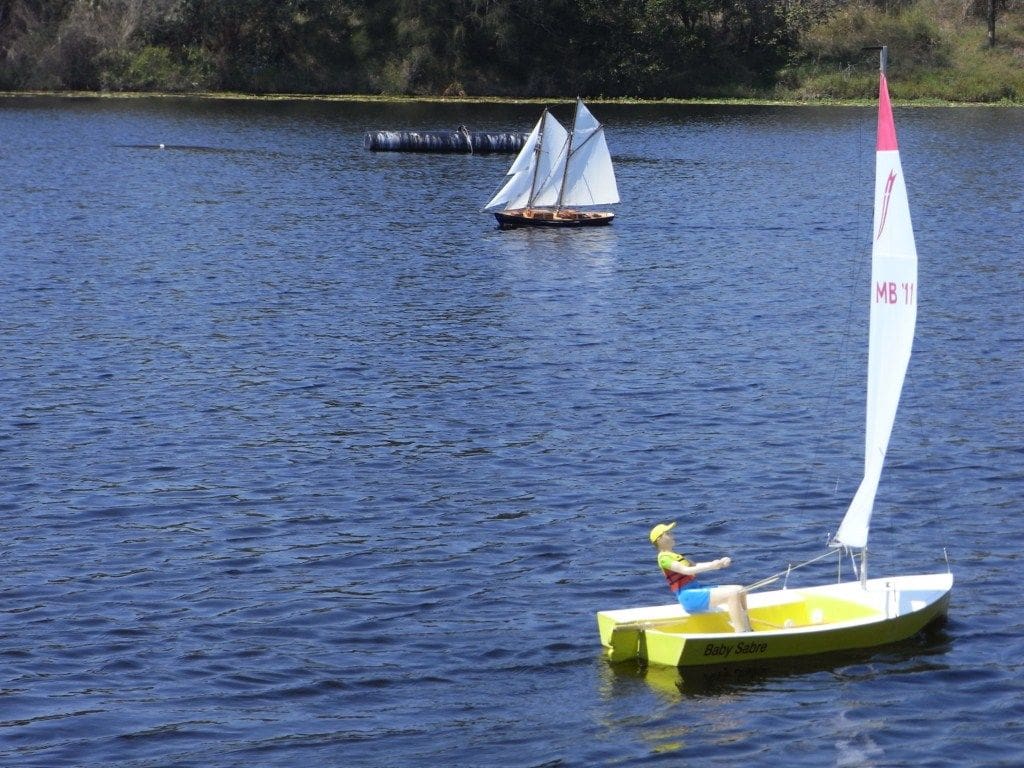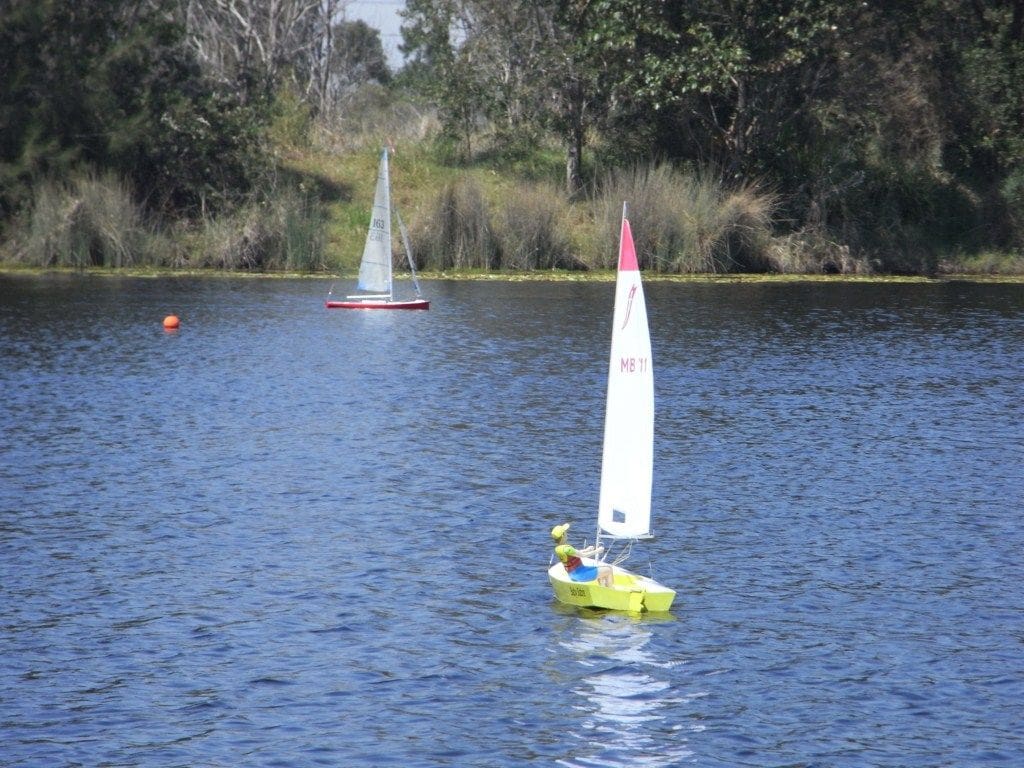Malcom Bard from Queensland, Australia, describes his models
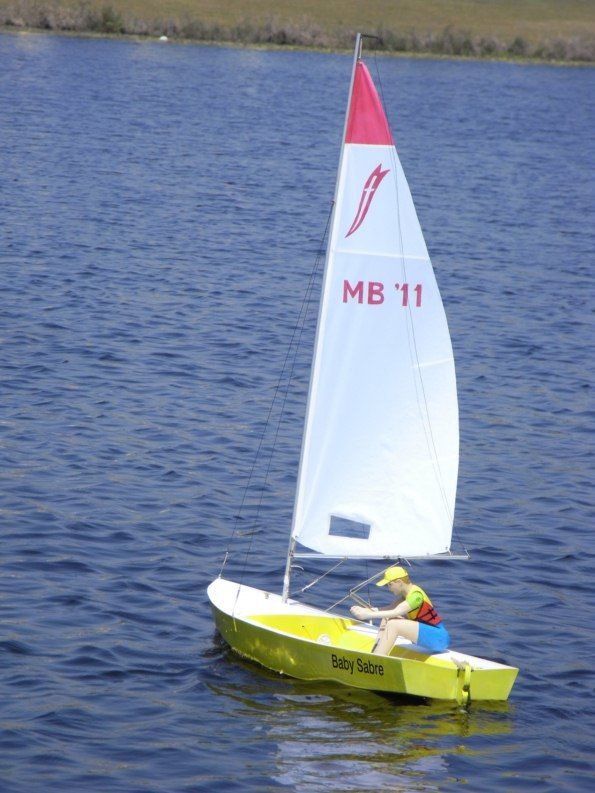
In the few years before moving to Australia in 1985 we lived at Leigh-on-Sea on the Thames Estuary near Southend. There we often saw Thames Barges in the distance and had a close-up view of them from the end of Southend pier on race days from time to time, so I fell in love with them. Having seen them advertised in Model Boats, I brought an HFM Marine kit back with me from a holiday in England in 2006 and then the fun started. The last model that I had made was nearly 30 years previously and more recently my ‘making’ had been building our house! Conversion from building ‘mega’ to ‘miniscule’ was quite a challenge and took a while. At the end of the day the standard is not too bad, but as I tell my mates at our boat club, my models are all best viewed from about five metres!
Thames Barge
Enjoy more Model Boats Magazine reading in the monthly magazine.
Click here to subscribe & save.
The model was fun to build and is not exceptional, but I have always had a bit of a ‘thing’ about models having little people on them. To my mind, even the most beautifully presented models look much less realistic without a crew or passengers. Carving the skipper, mate and deckhand out of polyester car body filler solved the problem for this Thames Barge which sails surprisingly well, except in strong winds. This led me on to my working single-handed model sailing dinghy.
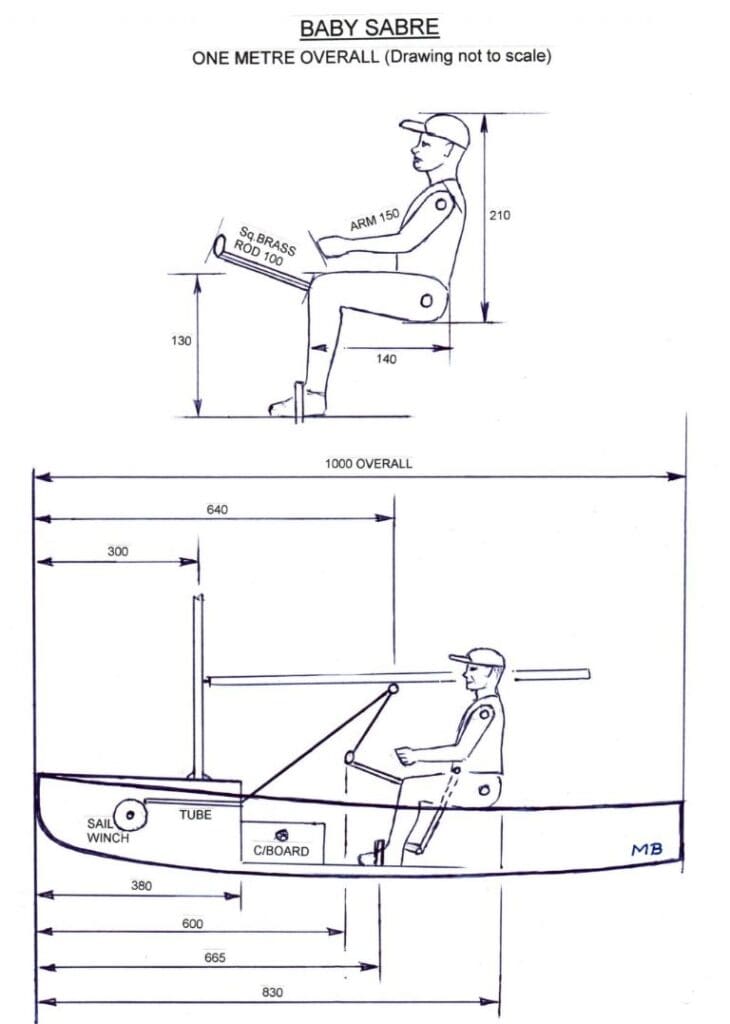
Baby Sabre
After years of sailing my full size Sabre dinghy on local rivers and lakes, a torn tendon in the right shoulder put me ashore permanently. Prior to giving the dinghy to my son in Melbourne (1200 miles away!), I took lots of measurements and a few photos, scaled it down to one metre overall length and drew up some plans. I prefer smaller boats, but I accepted strong advice from the club members that smaller yachts cannot cope with the frequent quite strong winds on our lake.
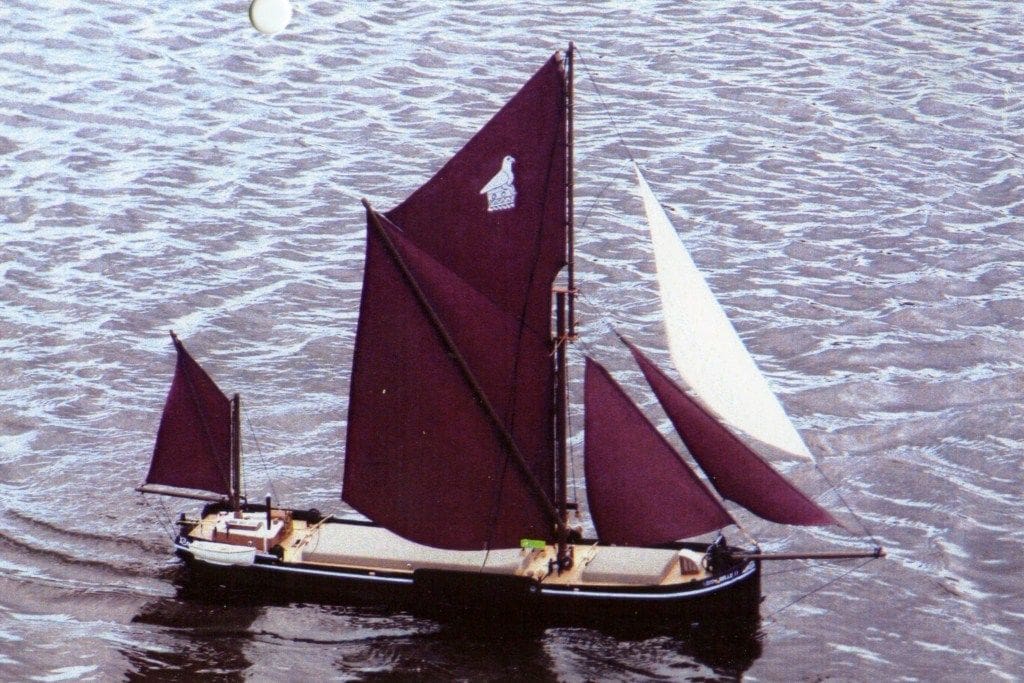
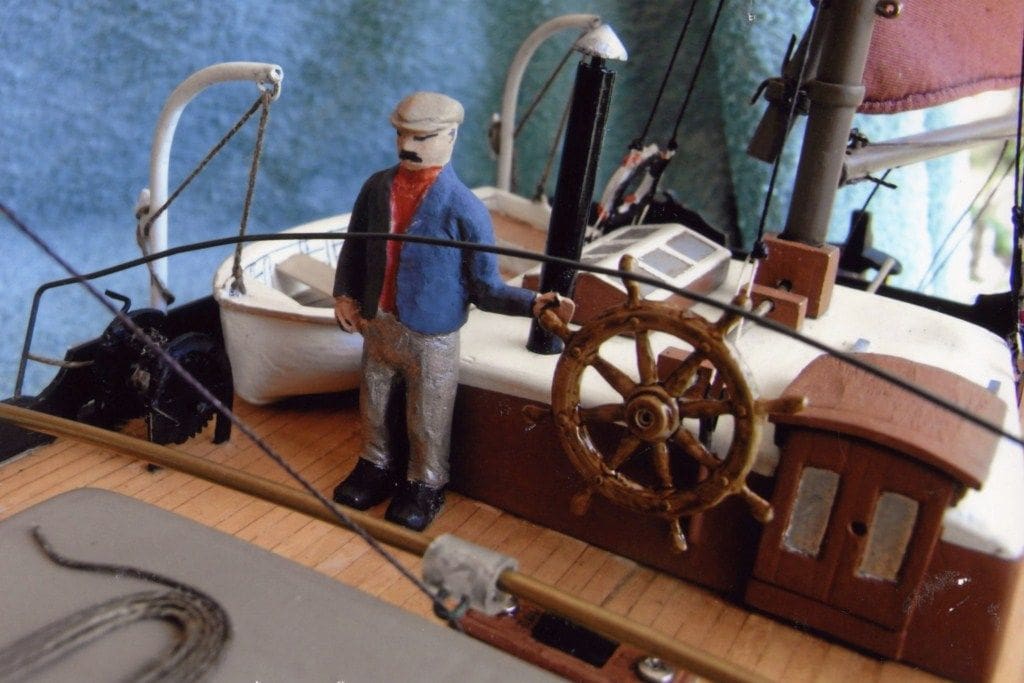
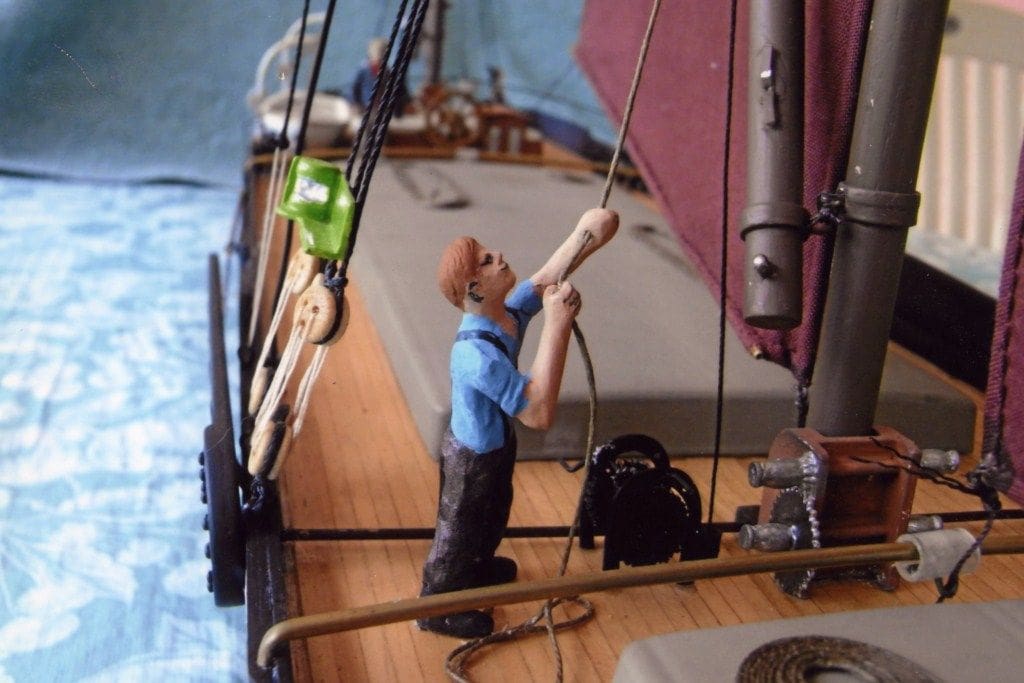
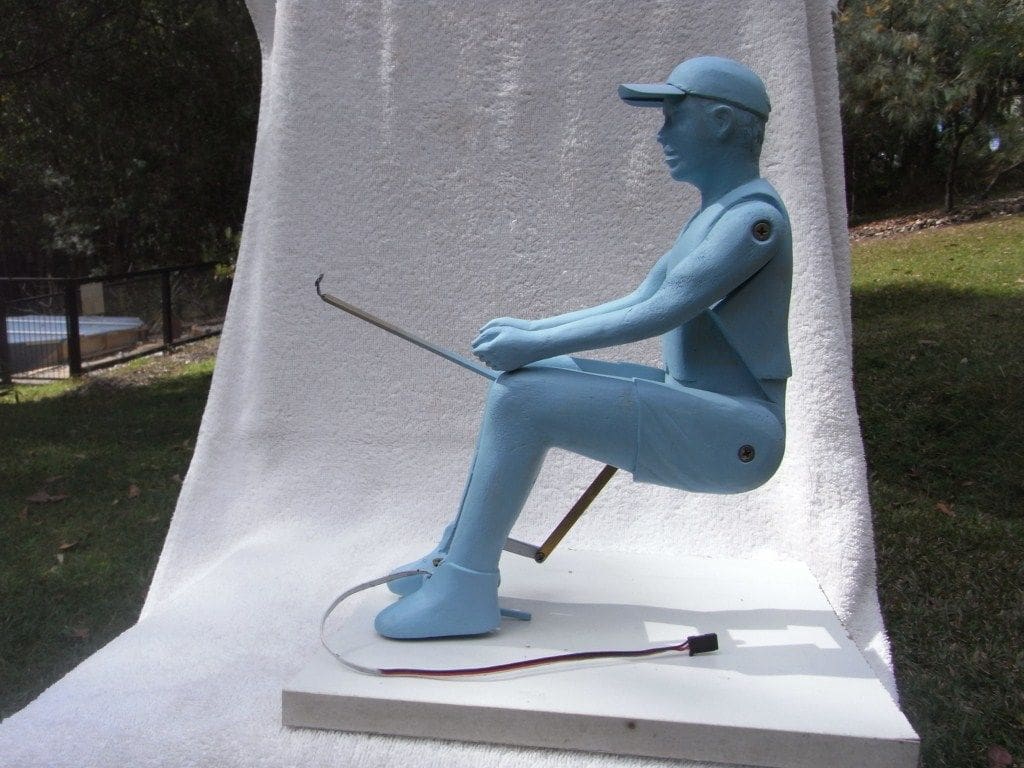
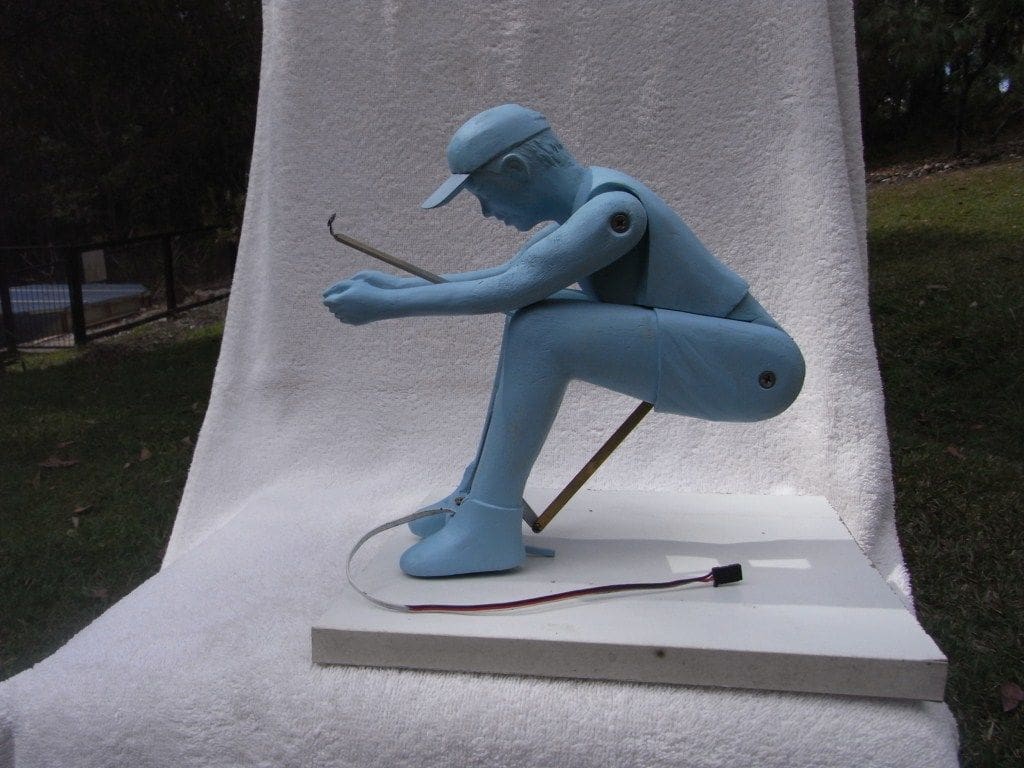
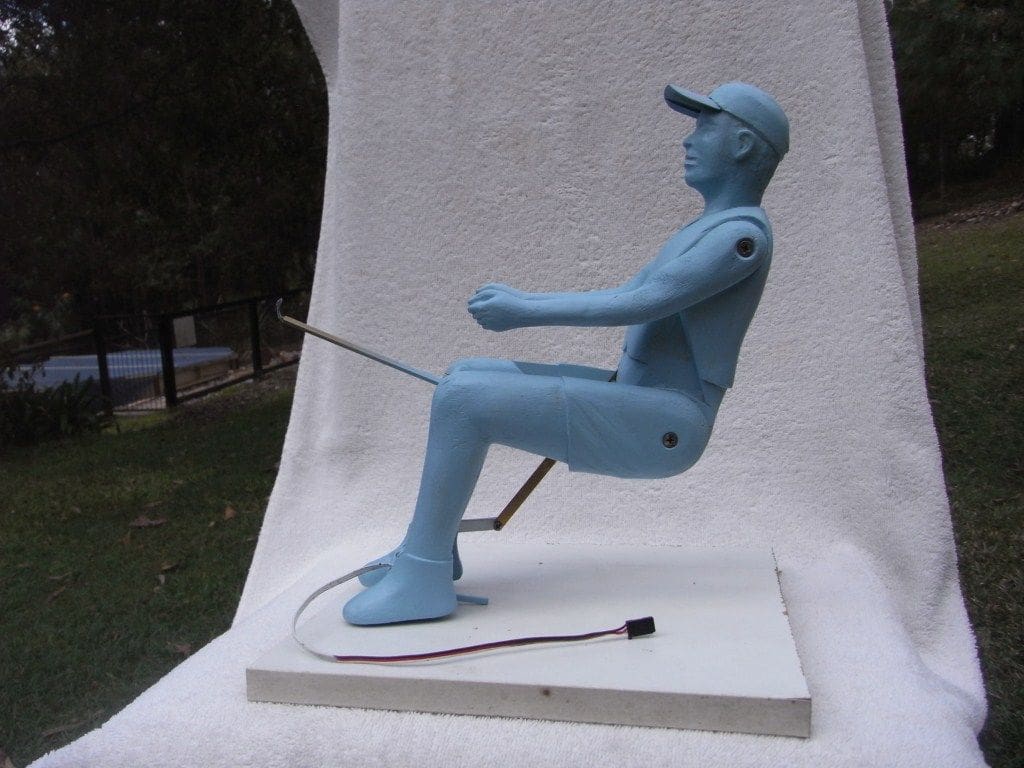
The model
I shall not go into the building of the model too much, but the hull is made up of 1.5mm ply over 4mm ply ribs, reinforced where necessary and is of conventional construction. Now, a model of a open sailing dinghy definitely demands a sailor, so after much thought I worked out a system that would swing the sailor round to face the sail when tacking either way. The sailor is made of solid balsa and to keep the weight down I hollowed out the body. The arm and leg pivots are stainless screws into pre-drilled dowels stuck in the balsa body. Pivot mating surfaces for arms and legs are 1.5mm ply stuck to the balsa. For the countersunk area for the stainless pivot screws I hollowed out the balsa, filled with polyester body filler then drilled and countersunk. It (he) works well and comes apart easily for painting.
Getting the crew to work…
This was the challenge and weeks of frustration, trial and error followed, but I finally managed to establish the best location of the eye on the sail boom relative to the eye on the rod coming out from between the sailor’s knees and the pivot pin set in the cockpit floor between his feet .One thing I did find, was that he should not be able to swing right round to 90 degrees off the centre line of the boat as 75 degrees was about the limit, or the angles go all wrong and the thing doesn’t work. The swing is limited by a spur at the rear between his feet that hits ‘stops’ on the cockpit floor. In the early stages I deliberately kept the boom extra high to avoid the sailor’s head as I had enough problems already! However, emboldened by a now reliable swinging system, I fitted a standard servo between the sailor’s calves with a crank and conrod up to the front of his stomach which made him duck low enough to avoid injury from a swinging boom set at the correct height and he was also able to lean out at a fair angle for beating (sailing into the wind – not the other sort!). To ensure the boom does not go too low, I added a crane to the top of the mast with a cord to the end of the boom. The sailor now looks incredibly realistic doing his stuff out on the water. The only real problem with the system is that it requires a fair amount of wind to operate efficiently, When the wind in the sail is too light, the boom is unable to pull the sailor to the opposite side of the boat. In light and fluky winds its best to leave the boat ashore or sail with the sailor ‘ducking’ all the time which makes your gimbal thumb sore after a while. When the wind does its job though, the model performs perfectly. For radio control the sheet is on a ratchet and the steering and ducking functions are on the same Tx gimbal which helps synchronise the action and help prevent me forgetting to get the sailor’s head out of harm’s way. It was suggested at the club in the early testing days that I paint realistic bruises on the sailor’s head!
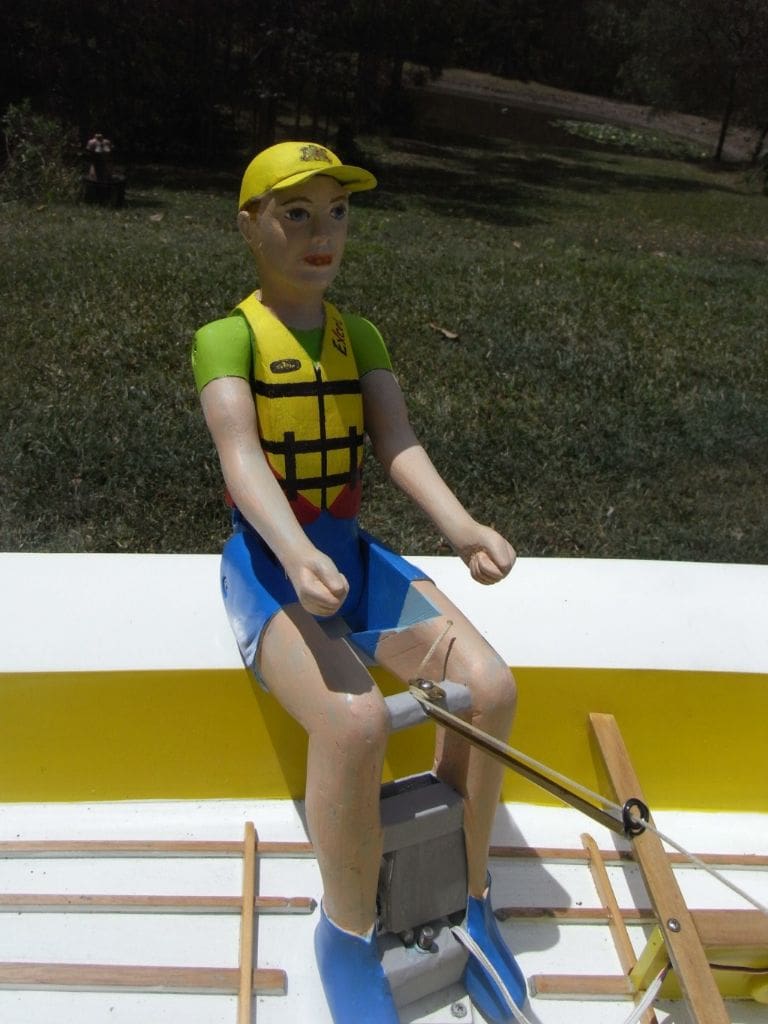
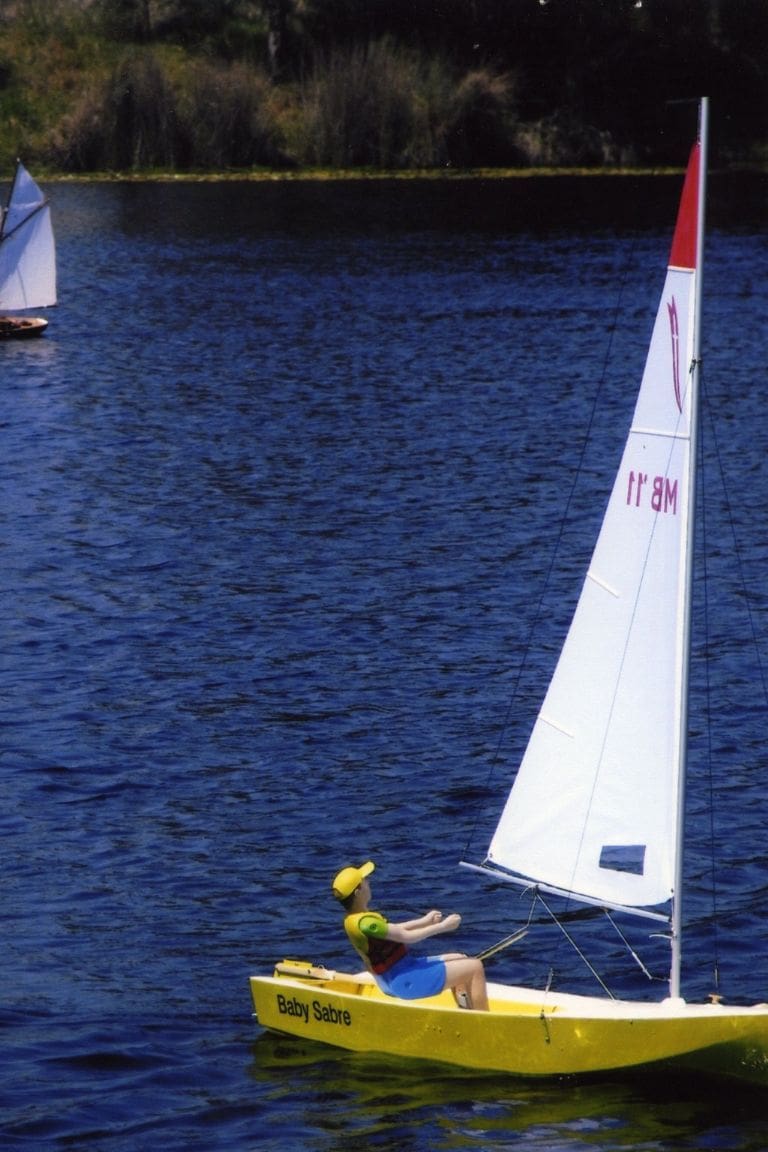
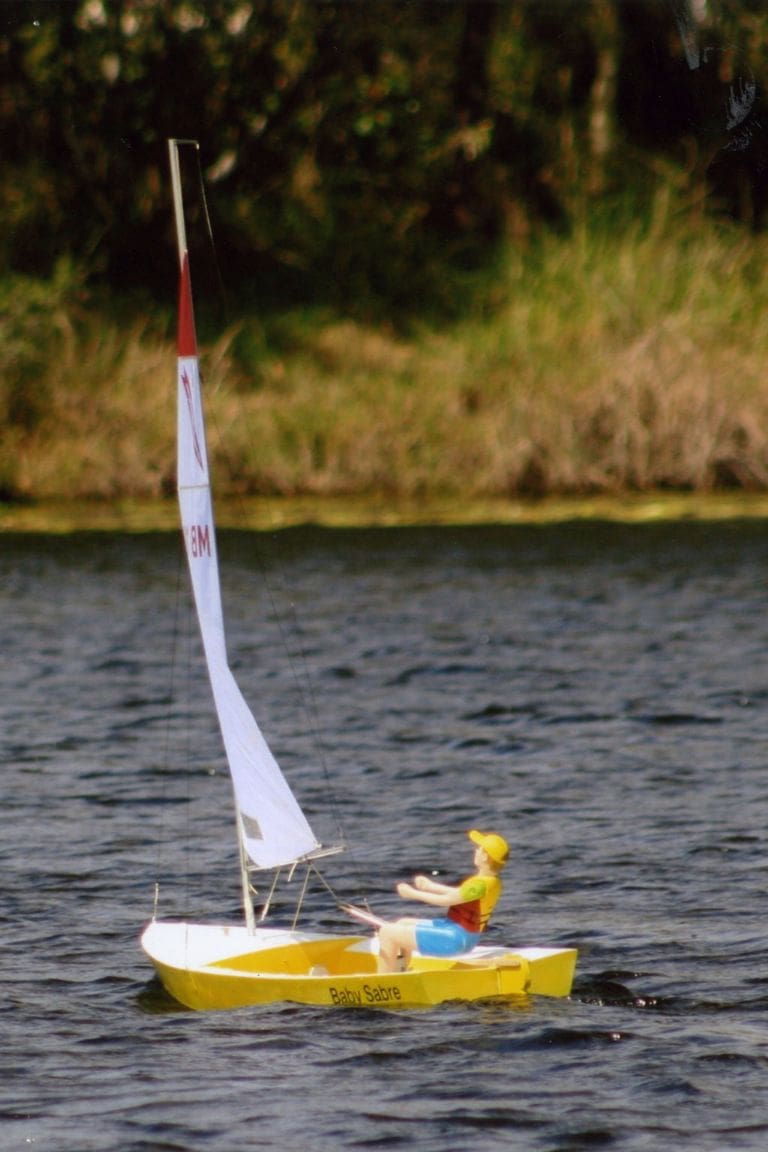
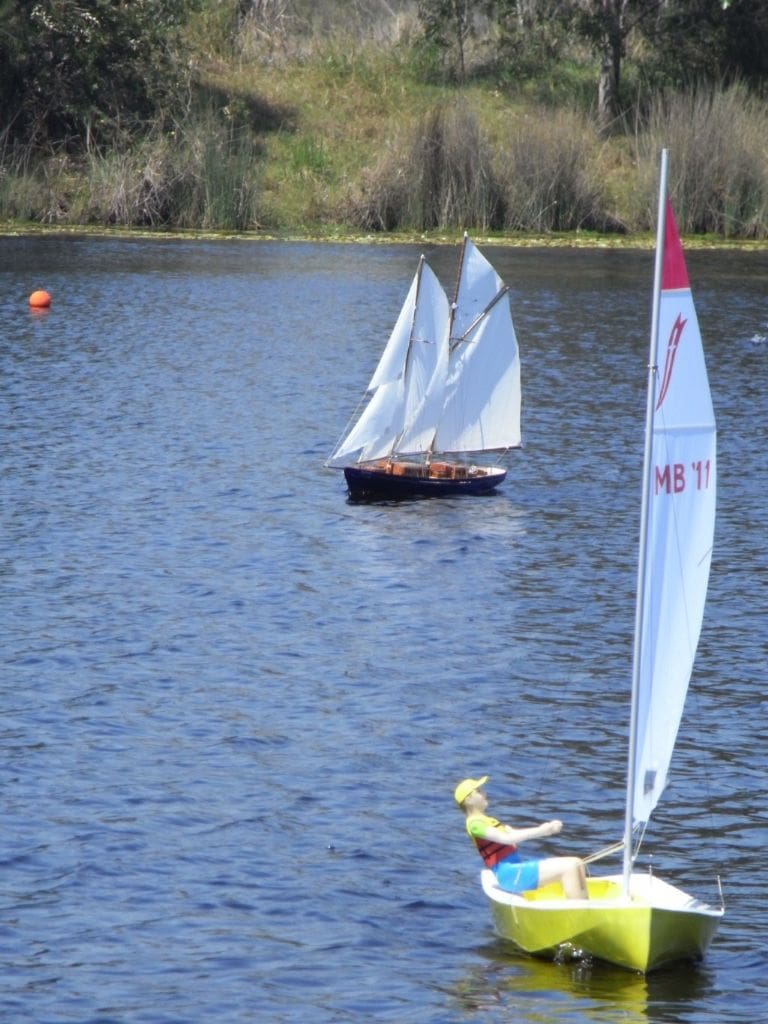
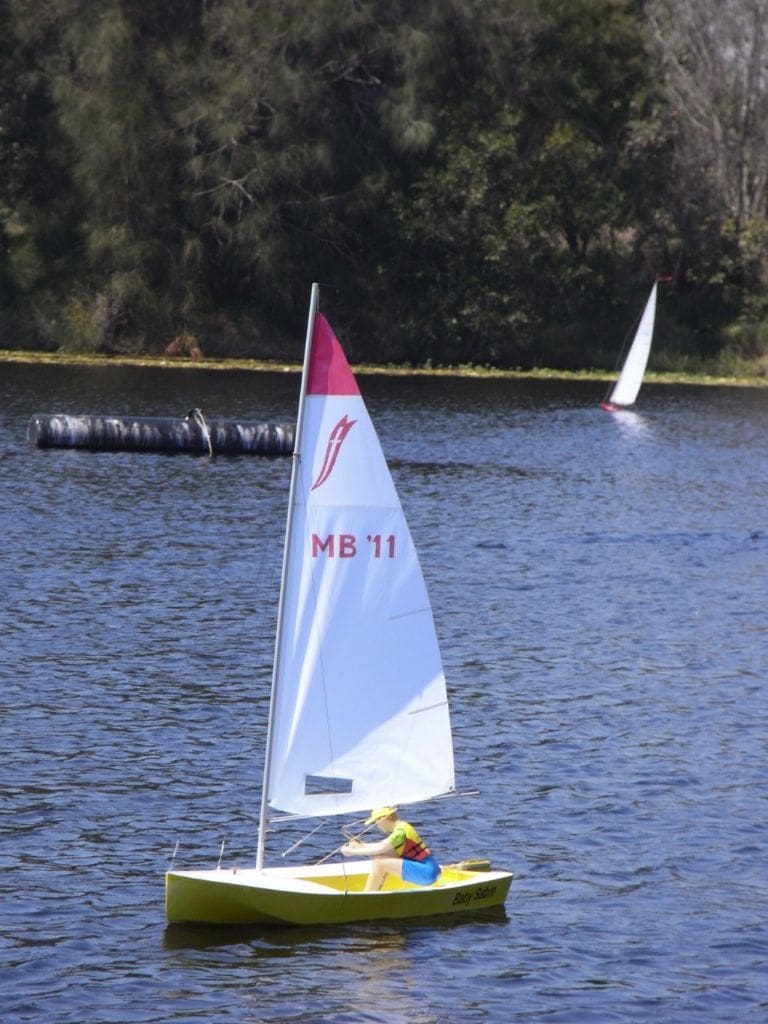
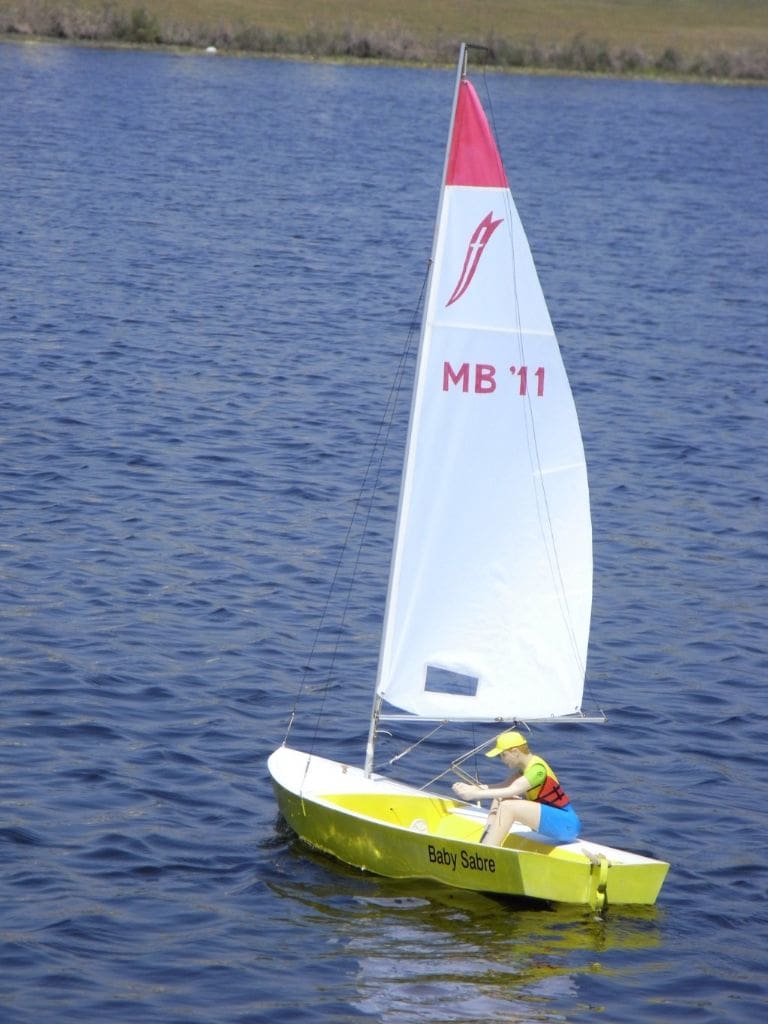
Conclusion
Starting model making again at age 75 has been the best thing I ever did. It has put real sparkle and excitement back in my life. Yes, one’s eyesight and dexterity could certainly be better, but with a little thought there is usually a way to get round most problems. Apart from the joy of making and sailing my models there has been the great fellowship and support from the members of the Sunshine Coast Model Boat Club who make superb models including 16ft battleships, submarines that fire torpedoes and missiles, tugs, high speed electric, a wide variety of yachts, schooners and motor boats. We meet every Sunday at a superb manmade lake with a massive covered area fitted with electric BBQ’s and multiple power points for charging batteries. This is set in the grounds of the Sunshine Coast University in South East Queensland. The club address is S.C.M.B.C., P.O. Box 1107, Buderim, Queensland 4558, Australia. If you are likely to be in the area, please contact us beforehand and we will make you very welcome.
(Malcolm is now 80 and his ingenuity and determination are a credit to him and the benefits of being in a model boat club are clearly shown in his article – Editor)
